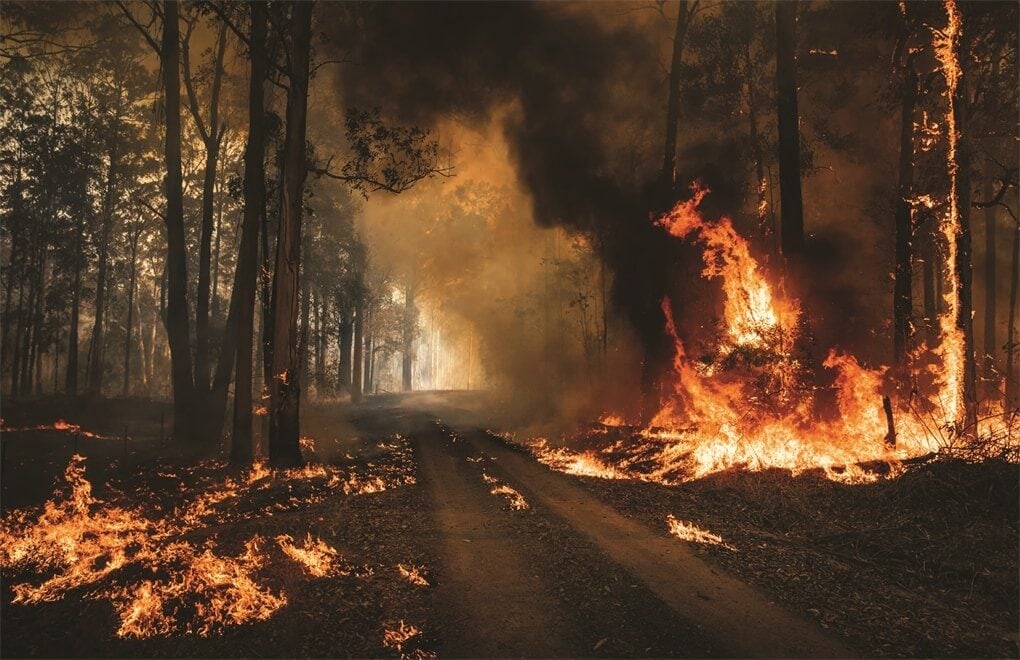In 2021 the launch of Minderoo Pictures received significant press. Reception was mixed.
Minderoo Pictures is an arm of Andrew Forrest’s philanthropic powerhouse, the Minderoo Foundation, and both are supported by Forrest’s iron ore mining operation, Fortescue Ltd.
As Alex Kelly insightfully outlined at the time in ScreenHub, with an initial budget of at least $10 million, Minderoo Pictures had the capacity to play a decisive role in Australian screen culture and potentially shape productions in line with the ideological mission of the resources industry. Given the poor environmental and social record of Fortescue (particularly in Indigenous communities), the risks of the documentary sector in particular being hijacked by Minderoo were real.
Read: Filmmakers, we need to talk about Andrew Forrest’s new film fund
Returning to this quandary three years later, we reflect on the complex terrain of documentary screen culture and its corporate ties, with a particular focus on energy and climate. Indeed, parts of Forrest’s mission of late has been to reinvent his brand as he moves to a ‘green energy’ platform. Yet, there is more in play here, and as scientists lose hope about the pivot needed to control climate disasters, the stakes are high.
The documentary sector has been rejuvenated by the rise of impact producing and a more formalised structure for philanthropic contribution. The Doc Society model that brought Good Pitch to Australia and the subsequent work of the Documentary Australia Foundation have been pivotal. From 2015 we started to see a revival in independent documentary taking on environmental advocacy, such as 2040 (2019) and Frackman (2015), in a way that didn’t occur when the sector was controlled by broadcasters and government funding structures.
We suggest that in the contemporary moment, questions about ethics and corporate funding seemingly circle around the line that divides philanthropy (sponsorship of an entirely independently conceived film) and promotion (funding a film with the aim of favourably publicising a named entity, its brand, or simply its ideological agenda). Things get interesting in the grey area between the two.
MasterChef’s current partnership with Australian Gas Networks is a clear television example of promotion. Media response highlighting tenuous claims about ‘renewable gas’ has been swift. But the rise of private sector funding also brings examples less clear cut than MasterChef’s sponsorship misstep. Two recent productions are interesting due to their murkiness.
Read: Film, philanthropy and the biology of hope
A Fire Inside: a case study
Insurance companies have always invested heavily in promotion. In 2021 and on the heels of the devastation of the Black Summer fire season, NRMA and Australian Resilience Corps (a sub-grouping of the Minderoo Foundation), funded A Fire Inside, a documentary that was released alongside a book of the same name. Directed by Justin Krook and Luke Mazzaferro, it tells the story of firefighters, their heroism and others in effected communities struggling as they rebuild in the aftermath of the fires.
We want to draw attention to the fact that insurance companies, with their significant economic power, might have long ago exerted influence to lessen increasing climate instability and disasters. Instead, they have adapted their business practices to accommodate them.
With A Fire Inside revolving round the message of ‘help’, the film brings associative meaning that works well for the NRMA brand, even if it’s not NRMA doing the helping. The emphasis on resilience rather than the systemic causes of climate instability and what can be done to mitigate it can be seen, cynically, as a corporate PR opportunity amid increasing global catastrophe.
But A Fire Inside is also a compelling, extremely well-crafted documentary that gives voice to the experiences of real people in the face of life changing events as they struggle to rebuild their lives.
Building the Snowy
Another, perhaps more ambiguous, case is that of the recent three-part series Building the Snowy, which first broadcast on SBS Television in August 2023 and continues to be available on SBS On Demand. It tells the story of the celebrated post-war infrastructure project, the Snowy Mountain Hydro-Electric Scheme, with each episode also looking to the extension of the scheme, Snowy 2.0, currently under construction in NSW.
Snowy 2.0 has been plagued by bad press, including ongoing machinery breakdown, safety concerns, cost overruns and poor environmental management and planning. The latter is particularly concerning given Snowy 2.0’s highly publicised environmental benefits which are tied to renewable energy. Building the Snowy was released in the midst of this quagmire of problems. The series does not have an investigative or argumentative style – it is highly celebratory and has a strong promotional tone.
It commemorates the original scheme in sound and image. While referring to some of the current difficulties, the overall style of the series is light and much more oriented to a positive image. We want to stress that there is no named association between the series and Snowy Hydro, the state-owned company managing the present-day project. But it is also difficult to ascertain where the funding was sourced. The series is credited to production company Wildbear Entertainment with assistance from Tindale Rd. Investments.
Like A Fire Inside, Building the Snowy is an assured piece of filmmaking. It delves into the vast archive of footage from the 1950s and 60s and brings it to light for a new audience while offering it important context.
These two examples complicate the promotional terrain in interesting ways. They are high quality productions with social value for audiences that can also be traced back to vested interests.
Australian documentary: a long history linking promotion of energy
It is easy to think of this as a contemporary quandary, but we want to draw attention to the long history that links the promotion of energy and documentary film.
One of Australia’s most famous and most innovative post-war documentaries, The Back of Beyond (1954), was a flagship production of a film unit set up by Shell Oil. It subtly linked the Australian psyche to a postal truck (and thus to petrol) driving across the outback.
Frank Hurley, the most well-known documentarian of Australia’s early 20th century, made a series of films for the Victorian Electricity Commission, one of which was called The Romance of Brown Coal (1949). The original Snowy Scheme, moreover, had its own film unit tasked with producing images that might counteract the many publicised problems that beset the project.
The history is even richer outside of Australia. John Grierson, who led the invention of the British version of documentary from the 1920s onwards, was also an advocate for the development of public relations. He schooled filmmakers in how to use the new film style – documentary – to promote corporate interests. He worked with gas companies and oil companies, encouraging the uptake of internal film units. His work with oil companies was so successful, most of them invested large sums in high-cost documentary.
There was also an impact on the development of film technology. On location sound was pioneered in Housing Problems (1935), with film crew going into London’s slums to give voice to the working class and to show their poor living conditions. The film was sponsored by the gas industry and showed the new housing projects waiting for the slum-dwellers, including gas fittings.
But the movement Grierson started was also interested in what corporations could do for the social good. Grierson is, in a way, part of the genesis of the impact sector.
We believe this history offers important context for documentary practitioners, even as it casts ethical decisions as more, not less complicated.
Admittedly these examples belong to a different time before the impact of fossil fuels on the climate was established. But the harmful localised effects of pollution and other issues have been long known.
Philanthropy and promotion: part of an ecosystem
As we work our way through understanding the ethical complexity of the contemporary funding landscape and how to navigate it, it might be more productive to consider philanthropy and promotion as part of an ecosystem, rather than dual options.
Finding an audience is important, especially in the domain of impact, but films have multiple effects and as sophisticated promotion/impact vehicles they often do more than one thing as they circulate amongst audiences.
But balance in any ecosystem is important. Almost three years since Minderoo Pictures entered the scene with a splash, it’s difficult to track their work. They have little online presence, no glossy annual report, and only a mention in the report for the Minderoo Foundation. Financial reporting shows $4.6 million went into the screen funding arm in 2022/2023, but it’s hard to tell where the money has gone. Anecdotal information suggests Minderoo have offered post-production to several projects, including excellent documentaries.
Whatever their aims, high profile branding has not been one of them. In the Minderoo Foundation’s most recent annual report, the CEO states that they see ‘philanthropy and charitable advocacy as two sides of the same coin’.
Entities with less than sustainable interests at heart have made good use of films and filmmakers for a long time, especially big oil. The screen sector has also benefited. What can we learn from this past and present situation that might support a swifter energy transition?
The C Word, a film currently in production (by Northern Pictures’ Karina Holden and Tosca Looby), unravels one aspect of this history as it shows how fossil fuel interests have shaped media messaging, and thus opinion on climate, over the course of decades.
Released in 2019, 2040, creatively promotes innovations in renewable energy, asking us to imagine a different future. There are other highly imaginative examples we could name. Couching them in relation to the history we have outlined highlights how there is something to learn from the toolbox of past practices. This includes the PR documentary of the kind Grierson championed as he recruited corporations to his documentary cause.
_________________________________________________________________________________________
Dr Belinda Smaill is Professor of Film and Screen Studies at Monash University. She has been writing about Australian documentary for more than two decades. Recently her work has focused on the ethical, cultural and institutional issues that shape the representation of the environment and biodiversity. She is the author of The Documentary: Politics, Emotion, Culture and Regarding Life: Animals and the Documentary Moving Image.
Dr Kate Fitch is a Senior Lecturer in Communication and Media Studies at Monash University, Australia. She researches public relations with a focus on history, gender and social justice and has investigated PR on screen. Her publications include Professionalizing Public Relations: History, Gender and Education and Popular Culture and Social Change: The Hidden Work of Public Relations. She co-edits Public Relations Inquiry.





